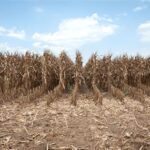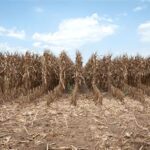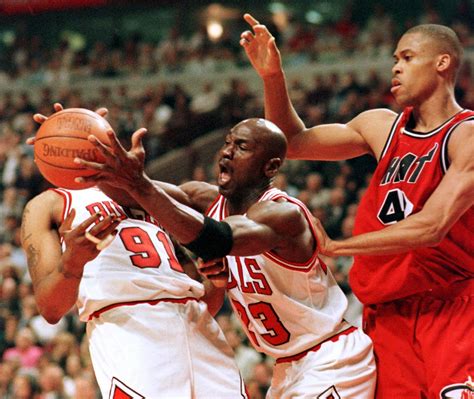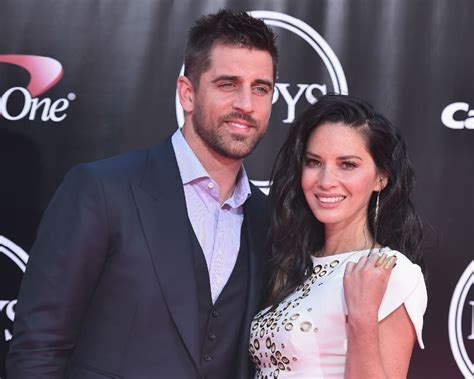Lewis Hamilton endured a frustrating Canadian Grand Prix, labeling it “horrible” after finishing fourth and revealing he struck an animal during the race, an incident he believes impacted his car’s performance.
Montreal – Lewis Hamilton described his Canadian Grand Prix as “horrible” after a race filled with challenges, including an unsettling collision with an animal that he suspects affected his car’s overall performance. The seven-time world champion finished fourth, missing out on a podium finish after starting seventh, a result that left him visibly disappointed and searching for answers. The Mercedes driver revealed the incident post-race, adding another layer of complexity to what was already a difficult weekend.
“It was overall a really horrible race,” Hamilton stated in a post-race interview. The Mercedes driver, known for his meticulous approach and high standards, elaborated on the issues he faced throughout the 70-lap contest at the Circuit Gilles Villeneuve. “We had so much pace this weekend, and I think our performance in qualifying showed that. But in the race, things just didn’t come together.”
Hamilton’s race started with promise, gaining positions in the initial laps and positioning himself as a contender for a strong finish. However, as the race progressed, he struggled to maintain pace with the leading cars of Max Verstappen, Lando Norris, and teammate George Russell. It was during this phase that the unexpected incident occurred, further complicating Hamilton’s efforts.
“I hit an animal during the race,” Hamilton confirmed. “I’m not sure what it was, but it did some damage to the car. From that moment, the car just wasn’t the same.” While Hamilton couldn’t definitively quantify the impact of the animal strike, he expressed concern that it contributed to the handling issues he experienced in the latter stages of the race.
The incident adds to a string of unfortunate events for Hamilton this season, as he seeks to regain his competitive edge and challenge for race wins. The seven-time world champion has faced stiff competition from younger rivals and has been working diligently to adapt to the evolving demands of Formula 1.
Mercedes team principal Toto Wolff acknowledged Hamilton’s struggles, stating that the team would investigate the extent of the damage caused by the animal strike. “It’s always disappointing when things don’t go according to plan,” Wolff said. “We need to analyze the data and understand why Lewis struggled more in the race than he did in qualifying. The incident with the animal is certainly something we’ll look into.”
The Canadian Grand Prix was ultimately won by Max Verstappen, who continued his dominant form, securing another victory for Red Bull Racing. Lando Norris finished second, with George Russell completing the podium in third. While Verstappen celebrated his win, Hamilton was left to ponder what could have been, reflecting on a race that he described as “one to forget.”
The incident with the animal has sparked discussions among fans and analysts, with many questioning the safety protocols in place at the Circuit Gilles Villeneuve. While animal intrusions are rare, they do pose a potential hazard to drivers and can significantly impact race outcomes.
Looking ahead, Hamilton and the Mercedes team will be focused on regrouping and preparing for the upcoming races. With a long season ahead, there is still ample opportunity for Hamilton to turn things around and demonstrate his enduring talent. However, the Canadian Grand Prix serves as a reminder of the unpredictable nature of motorsport and the challenges that drivers face both on and off the track.
Race Dynamics and Hamilton’s Perspective
Hamilton’s frustration wasn’t solely rooted in the animal strike. The race’s dynamics, including tire management and strategic decisions, also played a crucial role in his overall performance. Starting from seventh, Hamilton initially made a strong start, gaining positions and showing promising pace in the early laps. However, as the race unfolded, he struggled to maintain that momentum, particularly in comparison to his teammate, George Russell, who secured a podium finish.
“The start was good, and I managed to gain some positions,” Hamilton explained. “But after that, I just couldn’t find the same rhythm as George. We were on different strategies, and maybe that played a part, but I also felt like I was struggling with the car balance.”
The strategic differences between the two Mercedes drivers added another layer of complexity to Hamilton’s race. While Russell opted for a more aggressive strategy, Hamilton’s approach was more conservative, aiming to preserve tire life and capitalize on opportunities later in the race. However, this strategy didn’t yield the desired results, and Hamilton found himself unable to close the gap to the frontrunners.
“We tried a different strategy, hoping it would pay off in the end,” Hamilton said. “But it didn’t quite work out. Sometimes you have to take risks, but today, it just didn’t go our way.”
The incident with the animal compounded Hamilton’s challenges, further disrupting his rhythm and potentially affecting his car’s performance. While the exact extent of the damage remains unclear, Hamilton believes that it played a significant role in his struggles during the latter stages of the race.
“I’m not sure exactly what the animal was, but it definitely made an impact,” Hamilton said. “The car just didn’t feel the same after that. It’s frustrating because we had so much potential this weekend, but things just didn’t come together.”
Mercedes’ Perspective and Technical Analysis
From Mercedes’ perspective, the Canadian Grand Prix presented a mixed bag of results. While George Russell secured a podium finish, Hamilton’s struggles highlighted the challenges that the team still faces in optimizing their car’s performance.
Toto Wolff acknowledged the team’s shortcomings, stating that they would conduct a thorough analysis to understand the factors that contributed to Hamilton’s struggles. “We need to understand why Lewis struggled more in the race than he did in qualifying,” Wolff said. “We’ll be looking at everything, from the strategy to the car setup to the incident with the animal.”
Mercedes’ technical team will be examining the data collected from Hamilton’s car to assess the extent of the damage caused by the animal strike. This analysis will involve comparing the car’s performance before and after the incident, as well as examining the aerodynamic and mechanical components for any signs of damage.
“We’ll be looking at the aero data to see if there was any significant change in downforce or drag after the incident,” a Mercedes engineer explained. “We’ll also be checking the suspension and other mechanical components for any signs of damage.”
The team will also be evaluating the strategic decisions made during the race to determine if there were opportunities to optimize Hamilton’s performance. This will involve analyzing the timing of pit stops, tire choices, and overall race strategy.
“We need to review our strategy and see if there was anything we could have done differently,” Wolff said. “We’re always looking for ways to improve, and we’ll be using this race as an opportunity to learn and grow.”
Broader Implications and Safety Concerns
The incident with the animal has raised broader questions about safety protocols at the Circuit Gilles Villeneuve and other racing venues. While animal intrusions are rare, they do pose a potential risk to drivers and can have significant consequences.
Racing circuits typically employ various measures to prevent animals from entering the track, including fencing, netting, and regular patrols. However, these measures are not always foolproof, and animals can sometimes find their way onto the track.
“We do everything we can to prevent animals from entering the track,” a track official explained. “But sometimes, despite our best efforts, they still manage to get through. It’s a constant challenge.”
The incident has prompted calls for increased vigilance and improved safety measures at racing venues. Some have suggested implementing more sophisticated detection systems, such as thermal imaging cameras, to identify and remove animals from the track before they pose a threat.
“We need to explore all possible options to enhance safety,” a racing safety expert said. “This incident serves as a reminder of the potential risks involved in motorsport and the importance of continuous improvement.”
The FIA, the governing body of Formula 1, is expected to review the incident and consider whether any changes to safety protocols are necessary. This review will likely involve consultations with track officials, drivers, and other stakeholders.
“The FIA takes safety very seriously,” an FIA spokesperson said. “We will be reviewing this incident and considering any appropriate measures to enhance safety at future events.”
Historical Context and Previous Incidents
Animal intrusions on racetracks are not entirely unprecedented, although they are relatively rare in modern Formula 1. Throughout motorsport history, there have been several notable incidents involving animals, ranging from minor disruptions to more serious collisions.
In the early days of racing, when tracks were less well-protected, animal intrusions were more common. Stories abound of drivers encountering dogs, cats, and even farm animals on the track. These incidents often resulted in damage to the cars and, in some cases, injuries to the drivers or animals.
As racing became more professionalized, tracks were improved and safety measures were implemented to reduce the risk of animal intrusions. However, even with these measures in place, incidents still occur from time to time.
In recent years, there have been several notable incidents involving animals at motorsport events around the world. These incidents have included everything from birds flying into cars to larger animals, such as deer, crossing the track.
While these incidents are often unpredictable, they serve as a reminder of the importance of vigilance and the need for continuous improvement in safety protocols.
Future Prospects for Hamilton and Mercedes
Despite the disappointing result in Canada, Hamilton and the Mercedes team remain optimistic about their prospects for the remainder of the season. The team has made significant progress in recent races, and they believe that they are closing the gap to the frontrunners.
“We’re making progress, and we’re learning more about the car with each race,” Wolff said. “We know we still have work to do, but we’re confident that we can continue to improve and challenge for wins.”
Hamilton is also determined to bounce back from the setback in Canada. The seven-time world champion is known for his resilience and his ability to overcome challenges.
“I’m not going to let this race get me down,” Hamilton said. “We’ll analyze what went wrong, learn from our mistakes, and come back stronger at the next race.”
The upcoming races will provide opportunities for Hamilton and Mercedes to demonstrate their progress and challenge for podium finishes. The team is expected to introduce further upgrades to their car in the coming weeks, which they hope will further improve their performance.
With a long season ahead, there is still plenty of time for Hamilton and Mercedes to achieve their goals. The team is focused on working together, improving their car, and maximizing their performance at each race.
Fan and Media Reaction
The incident involving Hamilton and the animal has generated significant reaction from fans and the media. Many fans have expressed concern for Hamilton’s safety and have called for improved safety measures at racing venues.
“It’s scary to think about what could have happened,” one fan wrote on social media. “They need to do more to keep the track clear of animals.”
Media outlets have also highlighted the incident, with many focusing on the potential impact on Hamilton’s race performance.
“Hamilton’s race was derailed by an unexpected animal strike,” one headline read. “The incident added to a frustrating day for the seven-time world champion.”
The reaction from fans and the media underscores the importance of safety in motorsport and the need for continuous vigilance to prevent incidents that could jeopardize the well-being of drivers and others involved in the sport.
Conclusion
Lewis Hamilton’s “horrible” Canadian Grand Prix was a confluence of factors, including strategic challenges, car balance issues, and the unforeseen animal strike. While the exact impact of the animal strike remains under investigation, Hamilton believes it significantly affected his car’s performance. The Mercedes team is committed to analyzing the data, understanding the contributing factors, and implementing necessary improvements. This incident underscores the unpredictable nature of motorsport and the importance of continuous efforts to enhance safety protocols at racing venues. Despite the setback, Hamilton and Mercedes remain focused on their goals for the season, determined to bounce back and challenge for victories in the races to come. The incident serves as a reminder of the constant challenges and potential hazards drivers face, both on and off the track, and the need for vigilance and ongoing improvements in safety measures to protect all involved in the sport.
Frequently Asked Questions (FAQ)
1. What animal did Lewis Hamilton hit during the Canadian Grand Prix?
- The specific type of animal Hamilton hit is unknown. He mentioned he wasn’t sure what it was but that it impacted his car’s performance. The team is investigating to determine the extent of the damage.
2. How did the animal strike affect Hamilton’s car and race performance?
- Hamilton believes the animal strike negatively impacted his car’s handling and overall performance. He stated the car didn’t feel the same afterward, although the exact extent of the damage is still being assessed by the Mercedes team. He struggled to maintain pace and felt he lost rhythm after the incident.
3. What measures are in place to prevent animals from entering Formula 1 tracks?
- Formula 1 tracks typically employ a variety of measures to prevent animal intrusions, including perimeter fencing, netting in vulnerable areas, regular track patrols by security personnel, and wildlife management programs aimed at relocating animals away from the track vicinity. However, despite these efforts, breaches can still occur.
4. Will the FIA investigate the animal strike incident at the Canadian Grand Prix?
- The FIA (Fédération Internationale de l’Automobile), the governing body of Formula 1, is expected to review the incident. As the incident raises safety concerns, the FIA is likely to consult with track officials, drivers, and other stakeholders to determine if any changes to safety protocols are necessary to prevent similar incidents in the future.
5. What is Mercedes’ plan to address the issues Hamilton faced during the Canadian Grand Prix?
- Mercedes plans to conduct a thorough analysis of Hamilton’s car data and race strategy to identify the factors that contributed to his struggles. This will include assessing the damage caused by the animal strike, evaluating the effectiveness of the chosen race strategy, and making necessary adjustments to the car’s setup for future races. Team principal Toto Wolff has emphasized the importance of learning from the experience to improve performance in subsequent events.









